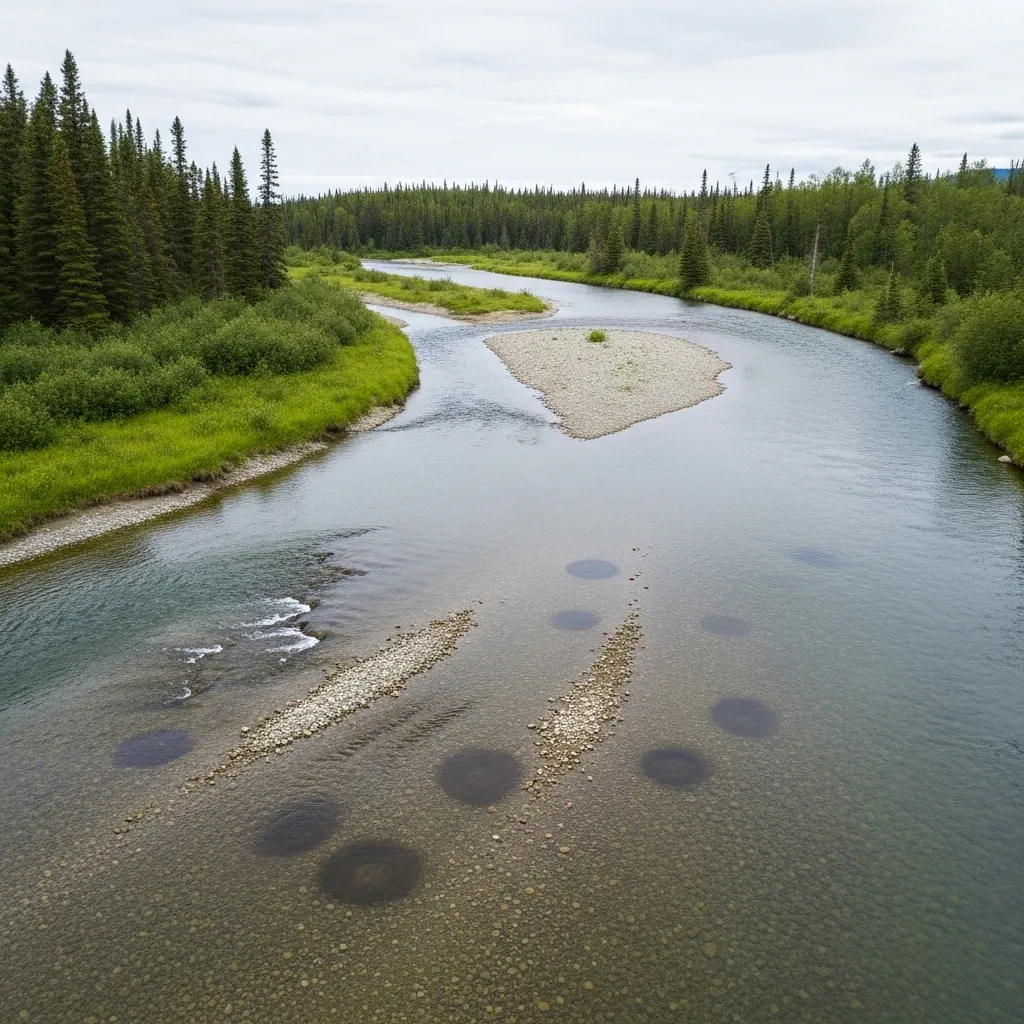
The Unseen Journey: Salmon’s Incredible Return Home
Deep within our rivers and oceans, an ancient and grueling migration unfolds. It is the life journey of the salmon, a fish that begins its life in freshwater, travels to the open ocean to mature, and then makes an astonishing return trip to the very stream of its birth to spawn and die. This type of life cycle, moving from fresh to salt water and back, is known as being anadromous.
The journey begins when a female salmon lays her eggs in a gravel nest, or “redd,” in a clear, cool stream. After hatching, the young salmon, called fry and then parr, spend months or even years in their home river. Eventually, they undergo a physiological transformation called smoltification, which prepares their bodies for life in saltwater. They then travel downstream to the ocean.
Once in the ocean, they spend one to five years feeding and growing, traveling thousands of miles. Then, something incredible happens. An ancient instinct calls them home. They begin their arduous journey back towards the coast, facing predators like orcas, seals, and sea lions. Once they reach the mouth of their home river system, they stop feeding and dedicate all their energy to the upstream battle.
Their ability to find their specific natal stream is one of nature’s great mysteries. Scientists believe they use an exceptionally sensitive sense of smell, or olfaction. They are thought to imprint on the unique chemical signature of their home stream as juveniles, and they follow this scent trail back, sometimes from hundreds of miles away, to the exact gravel bed where they were born.
The upstream journey is a testament to their endurance. They must leap up waterfalls, navigate rapids, and evade predators like bears and eagles. By the time they reach their spawning grounds, their bodies are battered and spent. The males often develop a hooked jaw called a kype and both sexes change color. After they spawn, they die, their cycle complete. Their decaying bodies are a vital gift to the ecosystem, transporting crucial marine-derived nutrients like nitrogen and phosphorus far inland. This fertilizes the riverbanks, supports plant life, and feeds countless other animals, making salmon a critical keystone species for entire forest ecosystems.















